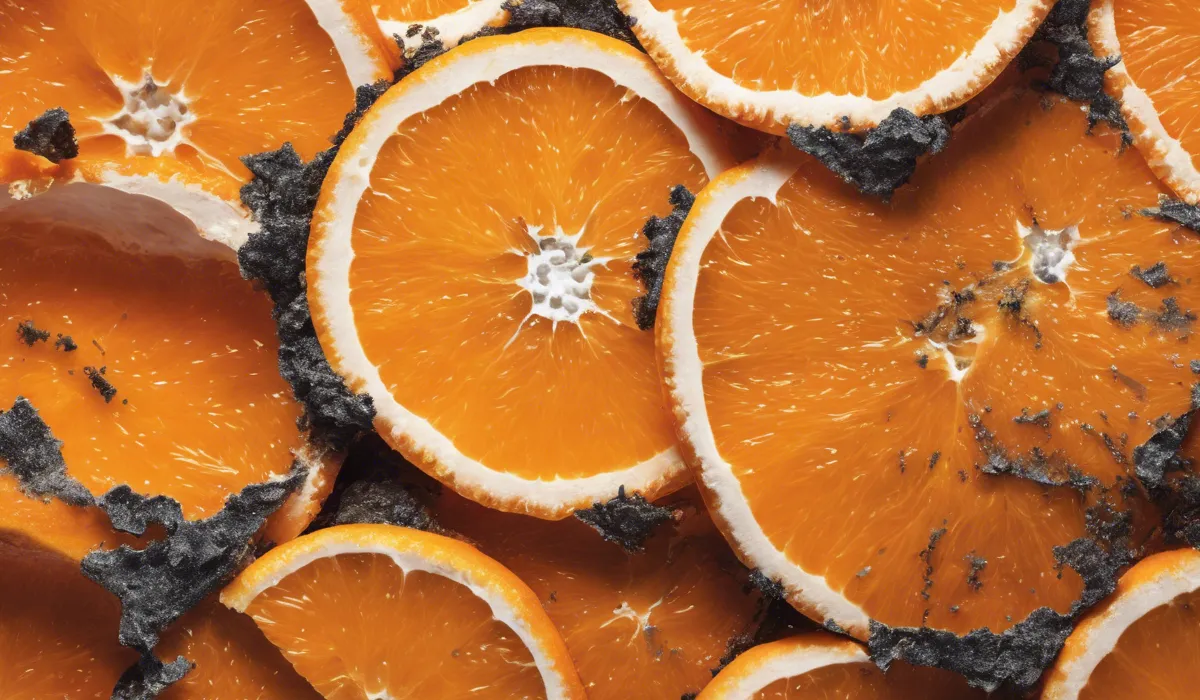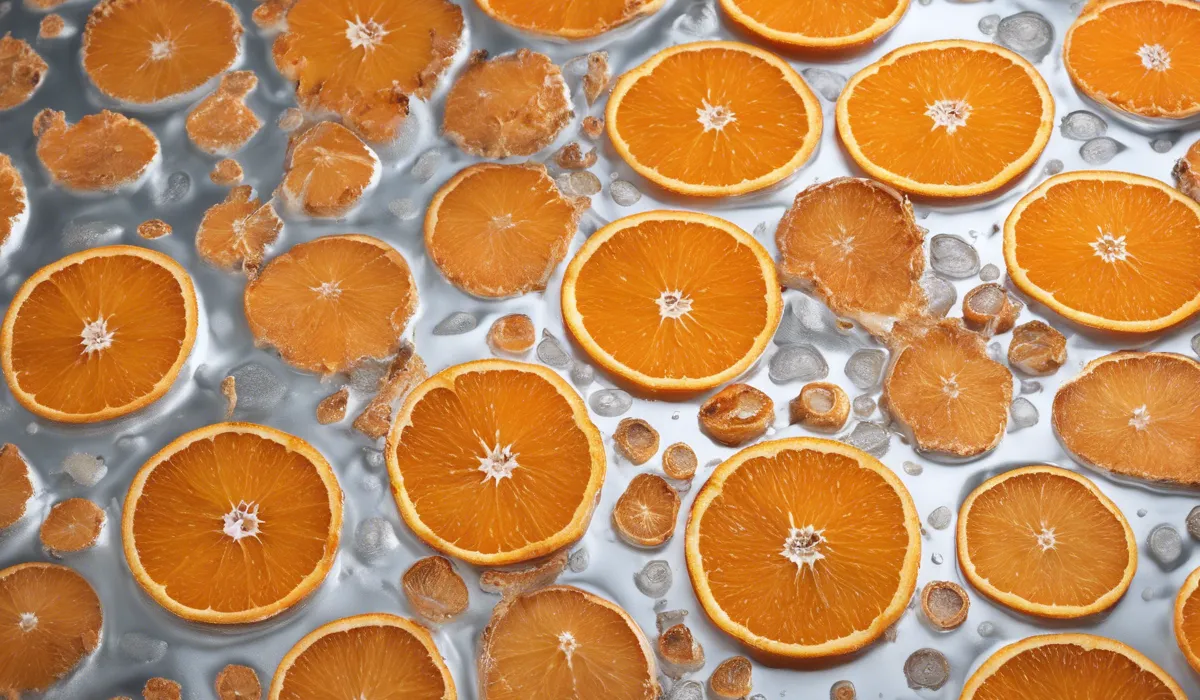Yes, mold can be orange. It is often found in damp environments and may appear on fabric, walls, or food. Orange mold, like other types, should be removed promptly to prevent health risks.
Understanding Mold and Its Various Colors

Defining Mold and Its Environmental Role
Mold is a type of fungus that plays a crucial role in nature by breaking down dead organic matter.
It grows in the form of multicellular filaments called hyphae and reproduces by releasing tiny spores that float through the air. These spores land on surfaces and, with the right conditions of moisture and temperature, they grow into new mold colonies.
Common Mold Colors and Significance
Mold comes in a spectrum of colors, each signifying different things about its species and environment.
Black mold, for instance, is often associated with damp, water-damaged buildings and can cause health problems.
Green molds are common on food and surfaces where there is decaying organic matter. White molds may indicate early growth stages or the presence of certain species that remain light in color.
Introduction to Orange Mold
Orange mold is one of the less common mold colors but can be found in similar environments as other molds.
It often has a slimy texture and can grow on a variety of surfaces, including food, walls, and other damp areas within a home or building.
Due to its bright color, orange mold can be easier to spot than some other molds, prompting quicker action to remove it.
Occurrence of Orange Mold
Orange mold can occur in any place where there is a persistent source of moisture and a lack of ventilation.
This can include bathrooms, kitchens, and basements. It is also frequently found outdoors in gardens or mulch where it helps decompose organic matter. Recognizing the environments that support its growth is key to controlling its spread.
The Characteristics and Implications of Orange Mold

Description of Orange Mold Appearance
Orange mold typically has a vibrant, rusty color that stands out against the surfaces it inhabits.
The texture of orange mold can range from fluffy and powdery to wet and slimy, depending on the species and the environment. Some may mistake it for rust or a stain, but upon closer inspection, its fuzzy or slick texture gives it away as a living organism.
Common Habitats for Orange Mold
Orange mold thrives in moist, warm environments. Indoors, it is often found in areas with water leaks or high humidity, such as shower stalls, under sinks, and on window sills.
Outdoors, it may grow on decomposing plants, wood, and other natural materials that retain moisture.
Health Risks Associated with Orange Mold
Exposure to orange mold can lead to various health issues, especially for those with allergies or weakened immune systems.
Symptoms can include respiratory problems, allergic reactions, and in some cases, more severe health effects. It is important to address any mold growth promptly to minimize these risks.
Hazard Comparison with Other Mold Colors
While black mold is widely known for its potential to cause serious health effects, orange mold can also pose risks, though they are generally less severe.
It is still important to treat all mold growth as a potential hazard and take appropriate steps to remove it safely and effectively.
Prevention and Remediation of Orange Mold

Strategies to Prevent Orange Mold Growth
Preventing mold starts with controlling moisture levels in your home or building. Use dehumidifiers in damp areas, fix leaks promptly, and ensure adequate ventilation in bathrooms and kitchens.
Regular cleaning and inspections can also help detect early signs of mold before it becomes a larger issue.
Safe Cleaning and Removal of Orange Mold
To safely clean small areas of orange mold, use a solution of water and detergent, or a mixture of water and vinegar. It is important to wear protective gear, such as gloves and a mask, to avoid inhaling spores.
Never mix bleach with other cleaning agents, as this can produce dangerous fumes. Always dry the area thoroughly after cleaning to prevent the mold from returning.
Professional Remediation Services
If the mold problem is extensive or if you have health concerns, seeking professional mold remediation services is the safest option.
Professionals have the equipment and expertise to remove mold thoroughly and safely, and to address the underlying moisture issues that led to its growth.
Maintenance Practices to Discourage Mold
Maintaining an environment that discourages mold growth involves regular inspections of potential problem areas, swift repair of any water damage, and maintaining good air circulation throughout the building.
Being proactive and vigilant can greatly reduce the chances of mold taking hold in your space.
FAQs About Orange Mold
Can mold actually be orange in color?
Yes, mold can indeed be orange. It is one variation of mold that can grow in damp environments.
Where is orange mold commonly found?
Orange mold can be commonly found on fabric, walls, or food in environments that are moist and warm.
Is orange mold dangerous?
Like other types of mold, orange mold can pose health risks and should be removed promptly.
How can I identify orange mold?
Orange mold can be identified by its distinct coloration, which can range from bright orange to a more rust-like hue.
What should I do if I find orange mold in my home?
If you find orange mold in your home, it’s important to clean the affected area thoroughly and address any underlying moisture problems to prevent its return.
Final Thoughts
Mold can indeed be orange and is commonly found in moist areas, affecting various surfaces such as fabric, walls, and food.
Due to potential health risks, it is crucial to address and remove any orange mold promptly upon discovery to maintain a safe and healthy environment.
